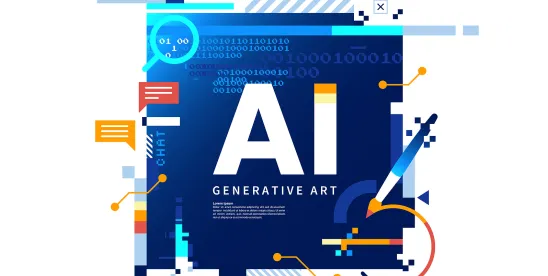The U.S. Department of Labor’s Wage and Hour Division (WHD) has published a Field Assistance Bulletin (FAB) on the application of federal labor standards to employers’ use of artificial intelligence (AI) and other automated systems in the workplace. Bulletins provide guidance to field staff on enforcing the federal statutes administered by the WHD.
FAB No. 2024-1 emphasizes that statutory protections apply as usual, irrespective of the new tools and systems employers are using. However, the use of AI may pose some compliance challenges. “Regardless of the exact AI or other technologies used, the principles described here provide guidance for evaluating how to comply with the law,” the FAB states.
In addition to addressing the potential implications of AI in properly tracking hours worked and calculating wages owed under the Fair Labor Standards Act (FLSA), the FAB addresses the potential impact of AI on compliance with the FLSA’s protections for nursing employees. The FAB also provides detailed guidance on the challenges that may arise with the use of AI and compliance with the Family and Medical Leave Act (FMLA).
Tracking Hours Worked, Calculating Wages Owed
The takeaway for employers from the FAB is to “exercise responsible human oversight” when using AI and other automated systems to track employees’ working time or determine wage rates to ensure the tools count all compensable time under the FLSA and properly calculate wages owed.
Tracking work time. Employers increasingly use automated monitoring tools to analyze whether employees are “active” or “idle.” Monitoring tools measure computer keystrokes, mouse clicks, and website browsing to analyze employee productivity. Facial recognition technologies track employee eye movements by webcam. However, the productivity metrics obtained by these tools do not determine whether an employee is performing “hours worked” for FLSA purposes. If the tools erroneously conclude an employee is not “working” and incorrectly categorize working time as noncompensable, the employer may violate the FLSA by undercounting compensable time and failing to pay wages for all hours worked.
Auto-deduct break time. Some automated timekeeping systems or software that track employee breaks incorporate AI to predict and auto-populate break time entries based on past time entries, regular shift and break schedules, and other factors. Employers using “auto-deduct” tools still need to ensure that employees are completely relieved of duty during recorded breaks, that time records accurately reflect employee breaks actually taken, and that employees are properly compensated for breaks not taken.
Waiting time. Waiting time is compensable if employees are expected to be fully available to work, must remain near the workstation, and do not have enough time between tasks for their own non-work pursuits. When employees are on duty but are waiting for their next assigned task, AI technologies that assign task routes and adjust schedules based on real time data must accurately account for those periods of compensable time during which employees are “engaged to wait.” For example, some hotels use automated systems to assign tasks to housekeeping staff. When a hotel guest checks out of their room, the system automatically delegates a cleaning assignment to a particular housekeeping employee based on their availability and reassigns tasks throughout the day based on current data. These tools allow managers to track employee activities in real time. The employees are still working if they are “engaged to wait” between the assignments, even as tasks are reassigned over the course of a shift. However, the use of AI tools to automate scheduling and assign work tasks may result in a FLSA violation if the tools do not accurately identify whether employees’ waiting time is compensable.
Multiple locations. The location of work is not determinative of whether the employee has performed hours worked under the FLSA, and use of location monitoring to track employees and determine whether they are “working” may create compliance problems if the system fails to properly account for compensable time worked in different locales. Geolocation software that tracks an employee’s location relative to a job site, automatically clocking in and clocking out the employee when entering and leaving a job site, may fail to account the employee’s compensable time before arriving at the designated job site. The start of an employee’s workday may include picking up tools at the employer’s plant and the travel time to the job site. Likewise, the workday may continue after leaving a job site if the employee has to unload supplies or perform administrative or other tasks off-site. Such a system also must account for the compensable travel time between jobs at different job sites.
Calculating wages owed. Some AI technologies can automatically recalculate and adjust an employee’s pay rate (including piece rates or rates paid on a per task basis) throughout the workday. The variable pay rates may mean significantly different regular rates from week to week. Employers that use these systems must make sure they accurately calculate the applicable minimum wage, regular rate of pay, and overtime premium. In addition to factoring multiple wage rates in a single workweek, AI systems must account for the many types of payments, including nondiscretionary bonuses, commissions, or other compensation, that go into an employee’s regular rate of pay.
AI and FMLA Compliance
The FAB also emphasizes “responsible human oversight” when using AI and other automated systems to administer FMLA leave.
Processing leave requests. AI or other technologies are sometimes used to process leave requests, track time off, and integrate absence calendars. The WHD emphasizes, “[W]ithout responsible human oversight, relying on automated systems to process leave requests, including determining eligibility, calculating available leave entitlements, or evaluating whether leave is for a qualifying reason, can create potential compliance challenges.” For example, a timekeeping program that incorrectly determines the number of hours an employee has worked may lead to a failure to correctly determine the employee’s FMLA eligibility.
Certifications. Use of AI to administer FMLA leave can create potential risk of violating the FMLA certification requirements if the AI system fails to comply with the FMLA’s limitations on the information that can be requested or notification or deadline requirements. For example, the WHD points out that an automated system that results in an employee being asked to disclose more medical information than the FMLA allows could violate the FMLA.
Interference and retaliation. AI and other automated systems that track leave may not be used “to target FMLA leave users for retaliation or discourage” use of leave. If the use of AI or an automated system leads to adverse action against employees because of their use of FMLA leave, that may result in unlawful retaliation or interference. For example, employers are prohibited from using systems to count FMLA leave as a negative factor in employment actions such as hiring, promotions, or disciplinary actions or assigning negative attendance points.
AI and Nursing Employee Protection
Employers must provide employees reasonable break time and space to express breast milk under the FLSA, as amended by the Providing Urgent Maternal Protections for Nursing Mothers Act. The WHD cautions against the use of AI to limit the length, frequency, or timing of breaks for nursing employees. The WHD also advises that the use of productivity scoring and monitoring systems that penalize a worker for failing to meet productivity standards due to the worker having taken pump breaks would violate the FLSA. Such productivity monitoring would need to be adjusted so employees are not being required to meet production requirements during the time they are taking pump breaks.
Other Provisions
The FAB notes that the use of AI to gauge an individual’s truthfulness may be subject to the restrictions on lie detector tests under the Employee Polygraph Protection Act. Finally, it cautions against the use of AI to take adverse actions against employees for engaging in activities protected under any of the federal statutes enforced by the WHD.
The FAB, written by Wage and Hour Administrator Jessica Looman, was issued April 29, 2024. The guidance was prepared in response to President Joe Biden’s Executive Order 14110, which calls for a coordinated U.S. government approach to ensuring the responsible and safe development and use of AI.







 />i
/>i

